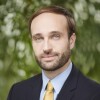
Contrasting Views on Future Prospects for Nuclear Energy Presented at Appropriations Hearing
On Nov. 16, the Senate Energy and Water Development Appropriations Subcommittee held the second of two hearings
Contrasting views on nuclear past and future
In his opening statement, Subcommittee Chairman Lamar Alexander (R-TN) referred to utilizing nuclear power as the best means of addressing climate change, and argued that the U.S. needs to invest in the next generation of nuclear reactors, including advanced reactors and small modular reactors. “We need to take steps today to ensure nuclear power has a future in our country,” he concluded.
In contrast, Ranking Member Dianne Feinstein (D-CA) pointed to the nuclear waste disposal stalemate, safety concerns about nuclear plants (especially those in earthquake-prone California), and advances in renewable energy as reasons against relying on nuclear power in the future. She also cited a series of failed attempts to deploy advanced reactors as reason to doubt their future prospects and observed that advanced reactors are “in competition for federal research funding with other clean energy sources.”
Feinstein invoked a long history of disappointment with advanced reactor designs, including criticism of them by Adm. Hyman Rickover (the architect of the U.S. naval reactor program), the 1966 partial meltdown of the Fermi sodium-cooled fast reactor, and President Jimmy Carter’s opposition
She went on to cite more recent examples, including Japan’s recent decision
In response to some of Feinstein’s remarks, Alexander expressed deep skepticism about the ability of wind and solar technologies to fill in for existing nuclear power plants and hailed the overall safety record of the U.S. nuclear industry. He noted that there has never been a death attributable to the operation of U.S. commercial or naval nuclear reactors, and stated that “The most celebrated accident we have in the United States was Three Mile Island in 1979, and despite years of testing of everybody in the area, no one was hurt.”
Deutch outlines potential advanced reactor deployment initiative
Deutch presented the conclusions of the SEAB’s Task Force on the Future of Nuclear Power, which Energy Secretary Ernest Moniz charged with describing the prerequisites for the U.S. to deploy one or more new reactor types at a significant rate in the 2030 to 2050 timeframe. In its final report

In his testimony, Deutch emphasized that the task force was “especially unanimous” in its view that the U.S. must undertake an initiative of the scale they propose if the nation wishes to have a “nuclear option” in the 2030s. He also stressed that the future economic competitiveness of nuclear power depends on rewarding its carbon-free nature, either through subsidies proportional to the social cost of carbon or through a charge on carbon emissions.
Absent an extension of existing reactor licenses or the construction of new nuclear plants, the U.S. will soon encounter a so-called “nuclear cliff,” a period where the nation will rapidly lose its nuclear generation capacity as old plants go offline. Currently, the U.S. nuclear fleet consists of 99 light water reactors that supply about 20 percent of the nation’s electricity and represent about 60 percent of the electricity generated without emitting carbon dioxide.
Task force report and testimony touch on R&D
Although the task force was not asked to review the current R&D portfolio of DOE’s Office of Nuclear Energy, the final report states that the task force does not recommend DOE expand this office’s support of advanced nuclear reactor R&D absent additional funding. In addition, the task force weighed in on the advisability of constructing a new test reactor facility in support of the advanced reactor initiative:
The Task Force does not believe a new test reactor is necessary for the demonstration / deployment initiative it is examining. … Although it may be desirable for the long-term health of the U.S. nuclear technology base, committing to the construction and operation of such a U.S. multipurpose test facility requires significant time and resources. Successful operation of such a facility requires a long-term, substantial commitment for base funding (as was learned with the Fast Flux Test Facility experience of the 1980s). The Task Force believes that if a U.S. test reactor project goes forward, the United States should seek international cooperation, both substantive and financial.
Although Icenhour did not weigh in on the SEAB task force report recommendations, he did advocate for a “sustained R&D program” focused on advanced nuclear energy technologies. Icenhour also described the R&D performed at Oak Ridge in partnership with other national laboratories to support existing and new reactor designs. He stressed that new simulation capabilities, such as those employed by the Consortium for Advanced Simulation of Light Water Reactors, permit more rapid innovation in nuclear reactor design and licensing—a point which he elaborated on in his written testimony:
By using a science-based design and licensing approach, we can improve upon history, rather than repeat it. The existing fleet of U.S. nuclear plants was developed using empirical engineering approaches. That is to say, systems were initially designed, built, and tested; designs were then marginally improved as operating experience was gained. Billions of dollars were invested in generating operating data to determine what worked best. … With contemporary science-based tools and techniques, the development phase can be rapidly accelerated in laboratory and high-performance computing environments. Similarly, there are opportunities to accelerate the licensing phase.




